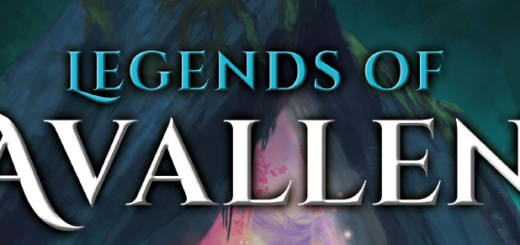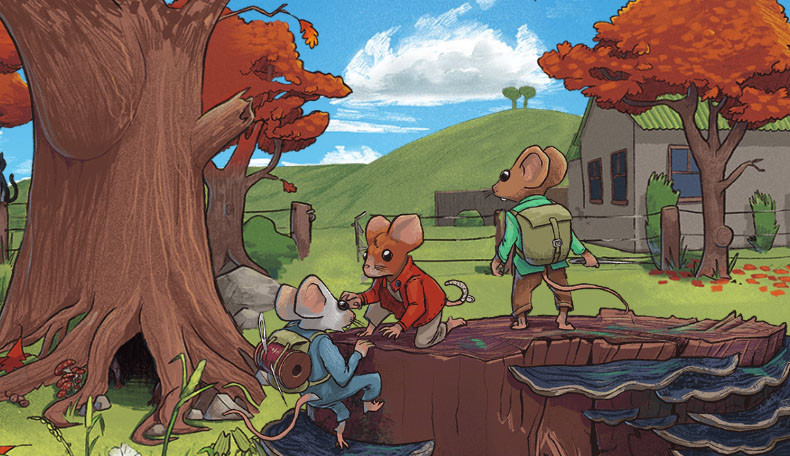Review of Arium: Create

After our last very Fate-Core-heavy rounds, we wanted to play a round of Honey Heist so that nobody had to prepare anything great. Since we had some time after Honey Heist and wanted to try Arium:Create as a method for world building anyway, we spontaneously started playing it. At the table there was also experience with microscopes, so Arium was in direct competition with them.
This post contains affiliate links, which are marked with a “*” in the name.
Short and crunchy:
Arium:Create is a tool for world-building in 1 – 2 hours Over seven steps, the same three phases are always run through: Timed Ideating, Collaborating, Voting. The seven steps are Lacunae, Universal, Big Picture, Cultures & Organizations, Landmarks, People, Goodies. Arium:Create promotes a safe environment and motivates the use of additional safety tools. It is important to the authors that everyone wants to play in the created Arium and that nobody feels uncomfortable. Modifications of other people’s ideas are made possible through consultation with the idea provider and the improvisation rule “Yes, and…”. All in all, it is a very collaborative creative process, reminiscent of methods from business meetings, but using them for the creative process of creating the world.
As an example, we have transferred the result of our test round into a trello board (and because we want to remember it after months for Arium:Discover)
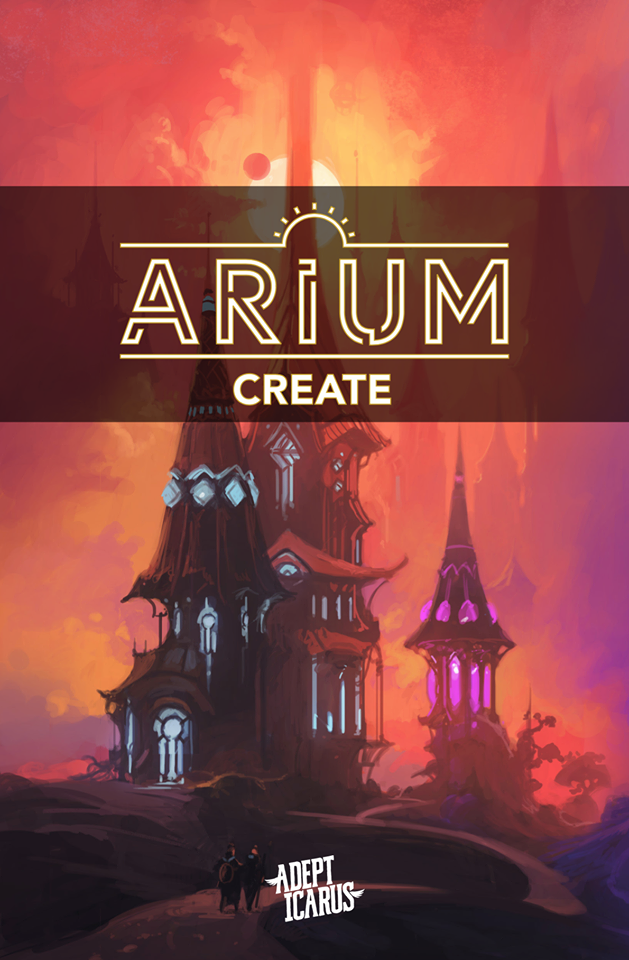
- Publisher: Adept Icarus
- Release Year: 2020
- Language: Englisch
- Pages: 52
- Format: PDF
- Price: $7.50 or in a bundle with Discover for $12 or as print for 14.95 $
- Available at: Adept Icarus / DriveThruRPG*
The Book
On 52 pages, the principle of Arium:Create is explained in detail. The authors emphasize that it is a collaborative process and that we are building an Arium by mutual agreement. Therefore, safety tools are recommended via the Lacunae found in Arium. At several points it is pointed out that we consult concerned persons before we make a decision or change an idea with the Creation Tokens. An Arium for all should be created.
It is also nice that an example is given at the end of the book to present the process again in written form in dialogue. In addition, there is also a kind of tutorial proposed that could be played through using only two steps (What are the 3 best movies ever / Which characters or actors from one of the chosen movies are best?). This helped everyone to get an understanding of the principle in a short test round during the abstract presentation :-).
The layout of the book is very colorful and always offers small boxes as additional information. All in all it was fast, beautiful and easy to read.
A result sheet and reference sheet are provided as additional material. The result sheet is for the summary of the individual steps. A reference sheet can be handed out to each participant so that it is clear to everyone which step/phase they are in and what comes next. Short explanations about steps and phase are also there as reference for all participants.
A short word about Creation Tokens
Each player gets three Creation Tokens. The form is not important. The tokens indicate the possibilities of when to create ideas with the “Yes, and…”. rule. So you have limited possibilities to intervene in ideas of others.
If you do not need the tokens, you can use them later for character creation in Arium:Discover.
In our first round of testing we can say that we didn’t need the tokens and were already satisfied with the ideas that came up.
Creation Phases
Arium:Create defines three phases that are applied to each of the seven steps. These phases are designed to encourage idea generation, discussion and collaboration.
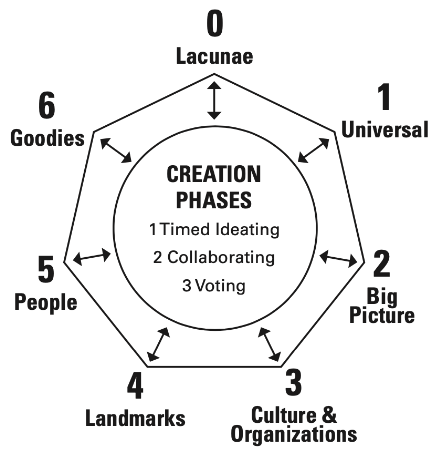
Timed Ideating
In the first phase, brainstorming is conducted. Within a given time, which is communicated in advance by the gamemaster, three ideas are written on a post-it or small piece of paper (e.g. index cards) by each player and the gamemaster. The writing surface of these notepads is deliberately small, so that one does not put novels on paper, but a short, concise idea. The Rule of Cool can of course be used here 🙂
Collaborating
In the next phase, the ideas are grouped and sorted by the gamemaster. Ideas of the same kind are thus grouped in coordination with the players. Once the cards are grouped, they are placed in a row. Each card or group of cards in the row can be considered a column in a table, which is relevant for the next phase.
Here it can also be helpful if everyone presents his ideas or explains them if they are unclear. We already had quite a good discussion here and further ideas based on the ideas on display.
Voting
In the third phase, voting takes place. Each participant receives a number of votes which is calculated: number of columns / number of participants (rounded down). With 12 columns and four participants, each person has 3 votes.
When all votes have been distributed, the group discusses the threshold at which ideas are accepted into the Arium. The rest is discarded. The idea here is that we determine how many votes from the group must be in favor of an idea in order for it to be accepted. Of course, this is also done in consultation with all those who did not vote for a card. This way we make sure that no one has a problem with the ideas, but maybe just didn’t like them as much as others.
Through voting we feed our Arium, our world, with ideas that are accepted and preferred by the group.
In our test round of Arium:Create, we set a threshold value for each topic area after voting. For us, sometimes the question was whether we would only take cards with three votes or more, or whether we would take cards with two votes or more.
With three or more votes, either the whole group agreed with an idea or at least all but one person. With two, only half of the group agreed. It also turned out that people often preferred other ideas.
In one case, at the request of a player, we rejected cards that had votes because the ideas in the Big Picture were not appealing. Since we saw the plot hooks in the ideas of the Big Picture and rated them stronger as ” Main-Plot” and less strong as “Side-Plot”, we all quickly agreed that we would like to bet exclusively on the higher rated ideas without losing anything or being offended.
Steps
There are seven steps that we work through in a drill-down or top-down approach. We move from the abstract to the concrete and the level of detail increases in the same way. The first topic is special, which is why it is also called step 0.
Lacunae
In Lacunae (Luh-KYOO-nee) we clarify the question: What does not come into our arium? The basic idea is that we consider this step as a safety net. Everything that is captured here should not be part of our world or history because someone has a problem with it. No matter what the reason is behind it.
Symbols can be used to indicate whether a Lacunae can be replaced by an alternative or can be indicated as a veil in the background and thus outside the scene, or whether it is not up for discussion and must not exist.
In this step, only Timed Ideating is used, and without any time limit, i.e. virtually only Ideating. As soon as nobody writes anything anymore, this step ends. There are no discussions (unless symbols are used) about the points and no questions about why something was written down. Voting is also not necessary.
Universal
This is where the controlled operation of the three phases starts. In Universal we clarify the genre, the flavor and also the tone of the setting. Do we play Grim-Dark Space-Vikings or rather urban fantasy with ghostly creatures?
In Universal we’ll stay as rough as possible to go into more detail about the background in Big Picture. Universal is mostly used to find genre and rough setting idea.
If the setting has already been determined, you can discuss the tone or fluff in the setting. So if Scifi is a genre, you could consider here in which direction it goes: exploration, trade, political disputes, etc.
Big Picture
In the Big Picture we define more about the world. How big is our world? Does our Arium take place in a city or in a country, continent, etc. Is there war or what story hooks can we get from events? Was there perhaps a newly discovered technology that changed lives? Or an accident that changed the balance of power in politics and the way people lived? How widespread is technology or magic and what is their influence on our Arium?
As you can see, we now decorate our setting. What makes our setting special or where are the main themes?
Culture & Organization
In this step, we dedicate ourselves to the organizations and cultures of our Arium. Secret societies, social classes, but also other traditions of different cultures can play a role here. But also institutions, schools or legends and beliefs. Basically all points that can be culturally decisive and formative.
Landmarks
Places of relevance is probably the short version of this step. This step refers to places that you could point with your finger on a map. However, this does not necessarily mean that all these places must be accessible or known. Why not an undiscovered island, which has been part of legends so far?
It is important that they also form a relevance for the narratives. The Town Hall is certainly part of the city and can also be found on a map, but what does the town hall offer for history? Perhaps it is a façade for a corrupt mayor who is being bribed by the mafia?
People
Which people live in our Arium? Here it is about creating concrete characters. Helpful are keywords like the name, pronouns, characteristics and descriptions of the persons. This can also result in characters that you want to play later or that are simply cool NPCs.
From this point on the limited space on the cards becomes noticeable 😉
Goodies
The last step is the McGuffins. Objects, vehicles and other material things that are important for the narrative or just cool.
Was nach der Erstellung?
At the time of writing this article of Arium:Create, the complementary Arium:Discover has not yet been released. This is supposed to provide a small universal rulebook to play the created Arium directly. However, the authors also assume that a set of rules of choice will be taken later to play the Arium even longer. Discover is intended to provide an introduction to discovering the Arium.
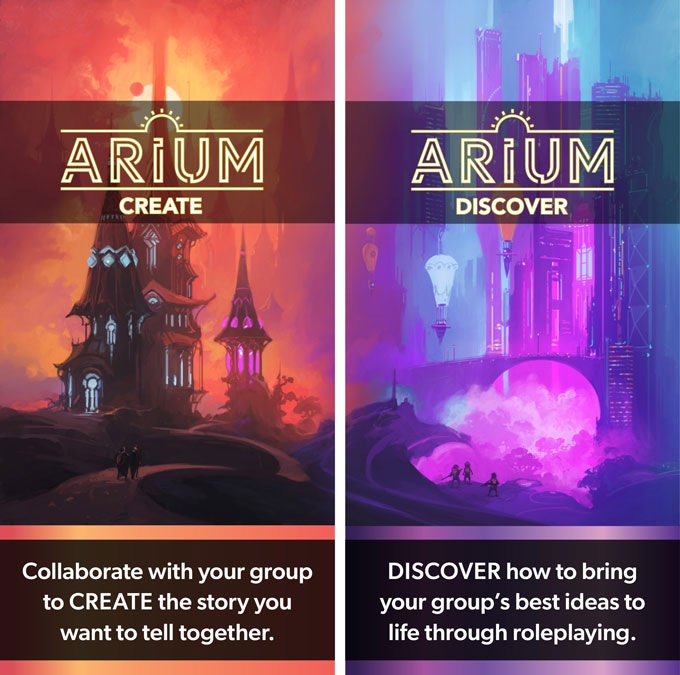
Arium:Bridge is a kickstarter stretchgoal that shows how to combine the Arium with rules like Fate and 5e.
Conclusion
René as GM
In Arium:Create, the gamemaster takes over the moderation of the process. Coming from the Agile area, one quickly finds oneself in this approach, since retrospectives and other tools have a very similar approach. But this is nothing that the authors hide.
In my opinion, this approach also works very well for world building. Getting all participants on the same page, discussing and determining what you don’t like or definitely don’t belong in Arium, builds an understanding of the Arium that is being created. In contrast to a setting, which is taken and with which you have to live, with Arium:Create you build a world for the group’s own needs.
Nobody at our table felt under time pressure and discussions were also very goal-oriented and led to nice ideas about how something came into the world. So at Landmarks we invented a workshop that builds the biggest and fastest ships, but is perhaps the opposition to the Guild of Mechatronics, which has a very high social standing and probably the best engineers. But what if the most modern and fastest ships just don’t come out of their halls?
The voting only ended with People and Goodies in one: “We’ll just take everything, okay? I can’t decide.” Because the ideas for all of us were just cool and fitted into the setting. Not surprisingly, since we were already very deeply immersed in our world and went from the original Scifi / Steampunk idea in Universal to a conflict between government and pirates, libraries with possible A.I. and a Gentlemens Club as a secret society.
Summary
All in all, I found Arium:Create to be a very productive approach that is not exhausting, fun and very collaborative. Through Lacunae and the voting I also didn’t feel the need for a veto right, which makes the whole system a less destructive approach, where I smash the ideas of others.
For $7.50, Arium:Create is definitely worth it. Clear purchase recommendation! Since Discover hasn’t been released yet, I can’t say if the bundle for $12 is worth it. As soon as Discover is available, we’ll be using our Arium with this short universal system!
Benjamin
With Arium I have now been able to try out the second, pure world-building game besides Microscope. Both pursue the same goal, but take a different approach: Where Microscope creates consistency over chronological connections, Arium focuses on the creation of elements of the world (locations, people, societies, objects). The creative consensus required for this is achieved through proven brainstorming techniques that ensure that each idea is initially received equally well. A refreshing approach to worldbuilding!
Katrin
First time worldbuilding for me and I can hardly imagine a better approach than that of Arium. Quickly understood and very cooperative, even if sometimes my creativity has left me.
Sebastian
Arium’s rough then detailed approach of creating worlds together with friends at the table works amazingly well and is entertaining. And this although the name always reminds me of South Park’s Plane’arium.

